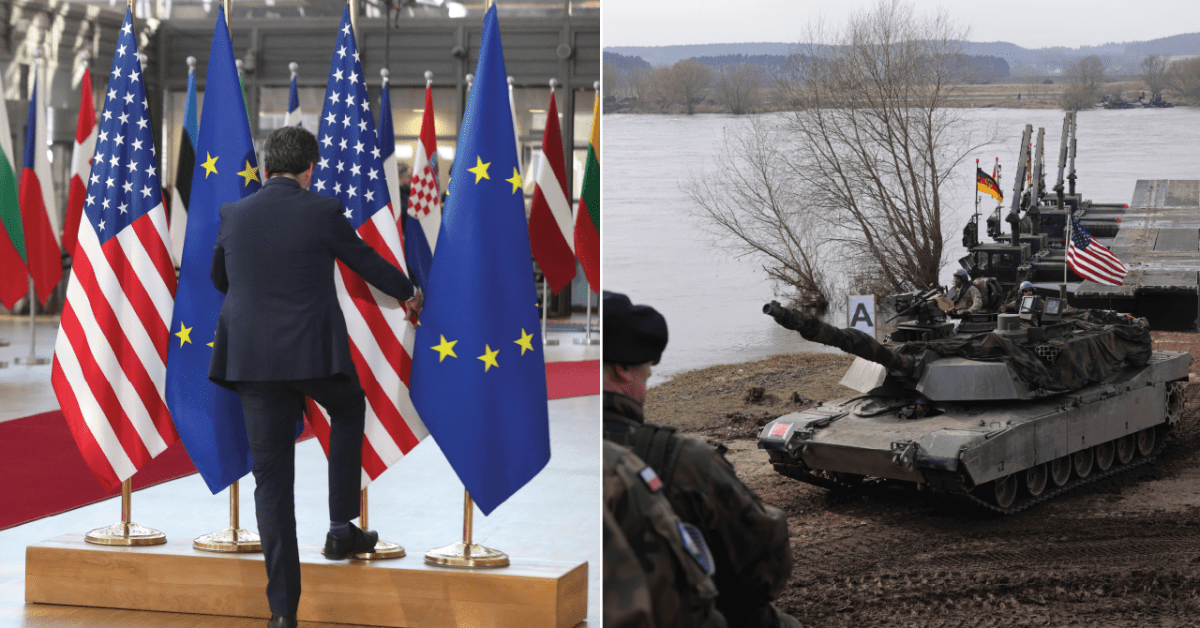U.S. forces used more than 125 precision munitions to strike three facilities in Iraq and four in Syria, which included command-and control-centers, headquarters buildings and intelligence sites, rocket missile and drone storage facilities as well as logistics and ammunition supply chain spots.
Lt. Gen. Douglas Sims, director of operations for the Joint Staff at the Pentagon, said B1 bombers dispatched from the U.S. were used in the operation. He told reporters Friday evening that targets were selected in part to avoid civilian harm, though “we made these strikes tonight with an idea that there would likely be casualties associated with people inside those facilities.”
The U.S. has no current plans to strike inside Iran, a senior administration official said, like others granted anonymity to detail sensitive planning.
John Kirby, the National Security Council spokesperson, wouldn’t confirm if aides presented Biden with options to attack inside Iran’s border.
The attacks were designed “to degrade and disrupt the capabilities” of the IRGC-backed groups targeting American personnel in the region, Kirby said, speaking in the same briefing as Sims. “We’re not looking for a war with Iran.”
The timing was related to the weather, Sims confirmed, saying conditions Friday provided the “best opportunity” to launch the strikes. Earlier in the day, Biden attended the dignified transfer of the three killed American soldiers to Dover Air Force Base in Delaware. Kirby stated that there was no connection between that event and the decision to strike Iranian-linked targets just hours later. A senior administration official earlier told POLITICO that the retaliation was planned for after the solemn movement.
Both Sims and Kirby said Friday’s strikes would not be the end of America’s response to Iran. More attacks are expected; two U.S. officials told POLITICO the next targets will be in Yemen. Sims and Kirby repeatedly declined to discuss future operations.
Biden ordered the strikes in response to the deadly Iran-backed attack on U.S. forces at Tower 22, a small outpost in northeast Jordan, last Sunday, which the administration attributed to the umbrella group the Islamic Resistance in Iraq.
“Our response began today. It will continue at times and places of our choosing,” Biden said in a statement. “The United States does not seek conflict in the Middle East or anywhere else in the world. But let all those who might seek to do us harm know this: If you harm an American, we will respond.”
The Quds Force is one of five branches of the Islamic Revolutionary Guard Corps, which is attached to the Iranian military that former President Donald Trump designated a terrorist organization in 2019. The Quds Force was created during the Iran-Iraq war as a special intelligence unit, and is known for training and equipping Islamic revolutionary groups throughout the Middle East.
The Quds Force, which reports directly to Iranian Supreme Leader Ayatollah Khamenei, trained Iraqi shia militias in the use of roadside bombs during the Iraq War, which killed hundreds of American troops.
Trump ordered the assassination of Quds Force leader, Maj. Gen. Qassem Soleimani, in a January 2020 drone strike, after a similar cycle of escalation between Washington and Tehran.
Biden and first lady Jill Biden greeted the remains of the three soldiers in a solemn ceremony at Dover Air Force Base early Friday afternoon. The Bidens then returned to their Wilmington, Delaware, home just minutes before the first explosions in the Middle East were reported.
Biden vowed to respond forcefully to the soldiers’ deaths, the first in the most recent conflict with Iranian proxies that has seen more than 160 attacks on U.S. troops in the Middle East since October. But with Friday’s strikes, Biden risks becoming even more embroiled in an escalating regional conflict that may draw in Iran.
In weighing his response to the Sunday drone attack, the president has had to walk a difficult tightrope: hit back strongly to the attacks and risk a war with Tehran; or act with restraint and risk emboldening the militants and looking weak on the world stage in an election year. Neither is guaranteed to stop the cycle of escalation between the U.S. military and Iran-backed proxies that began after Hamas’ Oct. 7 attacks on Israel.
Indeed, the Yemen-based Houthis, which launched a campaign against commercial shipping in the Red Sea in response to Israel’s operations in Gaza, continued attacking vessels in the region’s waters almost every day this week. In one instance, the destroyer USS Gravely shot down a Houthi cruise missile that
reportedly came within a mile of the ship.
The U.S. responded multiple times last week, destroying a Houthi surface-to-air missile, and in a separate strike a ground control station and 10 drones, according to U.S. Central Command.
There were some signs other Iranian proxies might be scaling back in the wake of the deadly Jordan attack, however. The militant group Kataib Hezbollah, which the U.S. has blamed for multiple attacks on U.S. forces in Iraq and Syria, this week issued a statement
saying it would suspend its operations against U.S. forces. However, Pentagon spokesperson Maj. Gen. Pat Ryder responded that: “Actions speak louder than words.”
Biden on Tuesday indicated he had decided on a response to Sunday’s deadly attack. But Friday’s actions may be the first of several rounds of military strikes. Kirby said last week that the administration’s response would be “tiered.”




